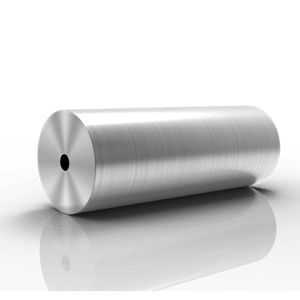Welcome to My Blog!
Before we dive into the content, I’d love for you to join me on my social media platforms where I share more insights, engage with the community, and post updates. Here’s how you can connect with me:
Facebook:https://www.facebook.com/profile.php?id=100090063158454
Now, let’s get started on our journey together. I hope you find the content here insightful, engaging, and valuable.
Introduction

Stainless steel 316 is a highly versatile alloy recognized for its outstanding properties. Among stainless steel grades, its corrosion resistance, especially in chloride environments, makes stainless steel 316 properties particularly valuable in marine, chemical, and food industries. This blog will delve into these properties, advantages, and applications, ensuring a comprehensive understanding of stainless steel 316 properties.
What is Stainless Steel 316?
Stainless steel 316 is an austenitic stainless steel that includes molybdenum, enhancing its resistance to corrosion compared to other grades like 304. The key stainless steel 316 properties stem from its composition of iron, chromium, nickel, and molybdenum. Understanding these properties is essential for informed material selection in various applications.
Chemical Composition
The chemical makeup of stainless steel 316 significantly influences its properties. Below is a table summarizing its typical composition:
| Element | Percentage (%) |
|---|---|
| Iron (Fe) | 62.0 – 72.0 |
| Chromium (Cr) | 16.0 – 18.0 |
| Nickel (Ni) | 10.0 – 14.0 |
| Molybdenum (Mo) | 2.0 – 3.0 |
| Carbon (C) | ≤ 0.08 |
| Silicon (Si) | ≤ 1.0 |
| Manganese (Mn) | ≤ 2.0 |
| Phosphorus (P) | ≤ 0.045 |
| Sulfur (S) | ≤ 0.03 |
Key Properties of Stainless Steel 316
Corrosion Resistance
A defining characteristic of stainless steel 316 properties is its exceptional resistance to corrosion. This resistance is particularly notable in environments containing chlorides, making stainless steel 316 properties crucial for marine applications and chemical processing.
Mechanical Strength
Another important aspect of stainless steel 316 properties is its high tensile strength. This strength enables stainless steel 316 to endure significant stress and load, making it reliable in structural applications.
Temperature Resistance
Stainless steel 316 maintains its mechanical integrity across a broad temperature range. The stainless steel 316 properties allow it to withstand temperatures up to 870°C (1598°F), which is vital for high-temperature environments.
Fabrication and Weldability
The ease of fabrication and welding is a key feature of stainless steel 316 properties. These properties enable manufacturers to create intricate designs and shapes, ensuring structural integrity.
Aesthetic Appeal
The polished finish of stainless steel 316 enhances its aesthetic value. The stainless steel 316 properties that contribute to its beauty also ensure resistance to tarnishing, making it a favorite for architectural and decorative applications.
Biocompatibility
Due to its non-reactive nature, stainless steel 316 properties include biocompatibility, making it suitable for medical devices and implants. This property ensures safe interaction with human tissues.
Hygienic Properties
The non-porous surface of stainless steel 316 facilitates easy cleaning and sterilization. The hygienic stainless steel 316 properties are crucial in food and pharmaceutical industries, preventing bacterial growth.
Benefits of Using Stainless Steel 316
The unique properties of stainless steel 316 translate into numerous benefits:
Durability and Longevity
Stainless steel 316 properties contribute to its long service life. This durability minimizes the need for frequent repairs and replacements, offering significant cost savings.
Cost-Effectiveness
While the initial cost of stainless steel 316 may be higher, its stainless steel 316 properties, such as longevity and reduced maintenance, make it a cost-effective choice over time.
Versatility
Due to its diverse stainless steel 316 properties, this material is applicable in numerous industries, ranging from construction to food processing.
Environmental Resistance
Stainless steel 316 properties, including resistance to harsh conditions, make it ideal for outdoor and industrial applications, providing reliability and longevity.
Compliance with Regulations
Stainless steel 316 is often essential in applications that must adhere to strict health and safety standards, particularly in food and medical sectors.
Applications of Stainless Steel 316

Stainless steel 316 is used in many industries due to its distinctive properties:
Marine Applications
Thanks to its excellent corrosion resistance, stainless steel 316 is prevalent in the marine industry for boat fittings, rigging, and hardware.
Chemical Processing
In chemical processing, the stainless steel 316 properties make it ideal for tanks, valves, and pipes that interact with corrosive chemicals.
Food and Beverage Industry
The hygienic and corrosion-resistant properties of stainless steel 316 make it a staple in food production equipment and processing machinery.
Pharmaceutical Industry
Stainless steel 316 is commonly used for manufacturing equipment in the pharmaceutical sector, benefiting from its biocompatibility and ease of sterilization.
Architectural Applications
The aesthetic appeal and durability of stainless steel 316 properties make it popular for railings, facades, and other architectural features.
Conclusion
In summary, understanding stainless steel 316 properties is essential for harnessing its advantages in various applications. Its remarkable combination of strength, durability, and corrosion resistance positions stainless steel 316 as a key material across numerous industries.
FAQ
What is the difference between stainless steel 316 and 304?
The difference lies in the addition of molybdenum in 316, which enhances its corrosion resistance. The stainless steel 316 properties make it more suitable for corrosive environments.
Can stainless steel 316 be welded?
Yes, it can be easily welded, and it’s advisable to use filler materials that align with its composition to maintain its properties.
Is stainless steel 316 magnetic?
Stainless steel 316 is generally non-magnetic but may become slightly magnetic when cold worked.
How do I clean stainless steel 316?
Use mild soap and water, along with a soft cloth. Avoid abrasive cleaners that can scratch its surface, preserving its stainless steel 316 properties.
What industries commonly use stainless steel 316?
Industries include marine, chemical processing, food and beverage, pharmaceutical, and architecture, all leveraging the unique stainless steel 316 properties.
